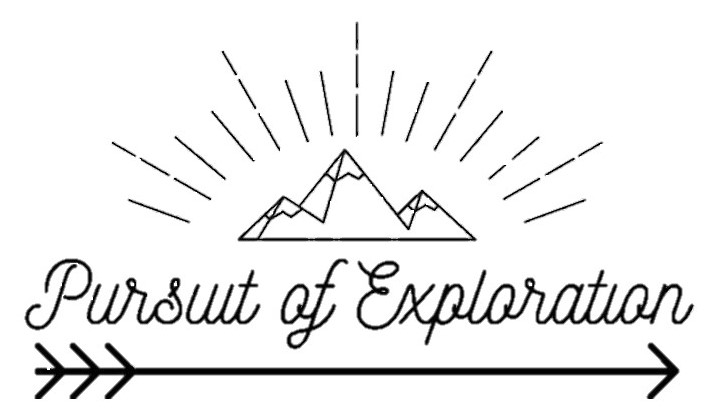The Pacific Crest Trail is a long and daunting 5-month journey. Why would anyone want to do such a thing?? And how would you even begin to prepare?
I was hooked to the idea of doing it ever since I first heard about it. I was sitting with my friend in the basement of a lecture hall at university. We were reviewing our notes for a geology midterm when she told me about this wild trail on one of our study breaks. I was ecstatic, that would be so wild! As someone who loves adventure and challenges, this seemed like the perfect thing to do! Since then, we would frequently look up photos and YouTube videos of people who had hiked the trail. We also watched the movie, Wild, based on the book by Cheryl Strayed. It inspired us, but also realistically highlighted some of the tremendous difficulties of actually doing it. Nonetheless, we were hooked and planned to do it once we finished our undergraduate degrees.
Unfortunately, life got in the way, as it does, and we went on to pursue other opportunities. But the idea of hiking that trail never quite left my mind. Whenever I stepped foot on a trail, my thoughts would always drift to whether I have what it takes to do the PCT. Finally, while basking in the glorious freedom of a roadtrip after finishing my graduate degree, I decided to go for it – I’m going to hike the PCT next summer! It’s time to really put myself to the test.
By the time I finally decided to get the ball rolling and start turning my dreams into reality, I discovered that I’d already missed the first permit release day – oh no! There are only about 4,500 long-distance permits issued per year for those starting at the Mexican border and heading northbound, with half of the permits being released in November and the remaining half being released in January. In a panic, I quickly signed up to be included in the January release date, and thankfully when the time came, I managed to acquire a permit to start hiking in May – hooray!
But permits aside, how do I start planning for such a big adventure?! I’ve only ever gone backcountry camping a handful of times, and each time has only ever been for a few days. I’ve never gone for a whole week, let alone 5 months! There are soooo many things to consider! How will I re-stock on food? How many days of food will I be able to carry? How will I make sure I don’t get lost? Will there be enough water in the desert? How do I not get bitten by a rattlesnake or eaten by a bear? What kind of clothes do I pack for 5 months of different climates and terrains? What sort of gear is best? How will I make sure I have the right shoes? Do I pack paper maps and/or bring a GPS? All these questions and more were spinning in my mind, it’s overwhelming! With my permit acquired, I decided to focus on four main aspects: water, food, navigation, and gear.
Water
One of the most prominent challenges portrayed in Wild is enduring the heat of the desert in conjunction with the lack of water. Both of these obstacles on their own can be challenging, but together, make for a deadly combination. Therefore, it’s necessary to plan for water sources accordingly to make sure you have adequate water at any given time. The rule of thumb is: 1 litre of water for 4 miles of hiking.
I find comfort in the certainty of a plan even if it’s bound to become uncertain. So, I made a preliminary hiking plan using the PCTA’s online water report map to determine which water sources I would encounter each day based on a rough estimate of the number of miles I would be hiking each day. But of course, this was overkill and kind of unnecessary since I won’t know what kind of distances I can handle until I’m out there doing it in those environments. So, I already knew that as soon as I stepped foot on trail, the plan would be thrown out. But, by having some sort of plan it made me feel more prepared although I still felt like I had no clue what I was doing.
I’ll later find out that the app, Farout, is by far the best resource for hikers. It provides a map of the PCT with your GPS location, and it includes waypoints indicating water sources, tent sites, and re-supply locations. Even better, it has crowd-sourced information, and by this, I mean hikers can leave comments on waypoints as to whether water sources are still flowing or the quality of campsites, for example. It also presents mileage and elevation. I didn’t have access to the internet on trail so I downloaded the comments every time I got to a place that had Wi-Fi.



Food
There are several different food re-supply strategies. Some hikers send re-supply boxes of food they’ve prepared beforehand, others buy food as they go, some do a bit of both. Many people in online forums mentioned that buying re-supply foods in towns along the way isn’t always a great option especially when a lot of hikers have already been through there – it makes for a higher chance of less variety and availability. Since I was planning to start in late May – the tail end of when northbound hikers are allowed to start – this worried me. I’ll already be starting at the end of the pack so many hikers will have already raided the shelves of towns before I even get there. I don’t want to show up somewhere and discover there’s no food left. So I decided I would send re-supply boxes, this would guarantee myself food along the way and permit me to avoid hitch hiking – something very common among PCT hikers and something that I was scared to do and wanted to avoid if possible (but I later discovered that hitch hiking is not a big deal and actually a lot of fun!).
Thru-hikers are a unique type of athlete since they undergo strenuous daily physical activity over an extended period of time. Because of this, they require a high number of calories, but are limited by the amount of food they can pack, since food is HEAVY. Pack Light, Eat Right, a web post by nutritionist Brenda L. Braaten, provides helpful information on nutritional requirements for thru-hikers. I found it helpful in deciding what sort of foods to pack. Aside from food weight, an additional limitation on food decisions for non-US hikers are customs regulations. The USDA’s website, and this website helped me navigate what types of foods to avoid shipping.
I later discovered that sending re-supply boxes wasn’t entirely necessary. Every town I went to had ample hiker food selection. It also helped that 2023 had intense weather obstacles that deterred many hikers from hiking the trail that year, which meant that shelves remained stocked, for the most part. I also eventually became sick of eating the foods I’d packed in my re-supply boxes so reverted to mostly buying food as I went along. This allowed me to have greater variety in different foods and made it somewhat easier to manage my pack weight. Lesson learnt!


Navigation
I originally bought the Wilderness Press Pacific Crest Trail map books. But soon after starting to hike, I realized these books are way too heavy to be carrying along with me, so I switched to the National Geographic maps. They’re much lighter, the map is beautifully presented, and the pages are waterproof. I also brought a GPS with me, but never ended up using it since I predominantly used my phone with the Farout app. I also had a small compass with me, just in case.


A list of some of the gear I started with:

- Tent: Big Agnes Copper Spur HV UL2
- Sleeping bag: Big Agnes W Sidewinder SL 20⁰F
- Sleeping mat: Therm-A-Rest NeoAir XLite NXT
- Stove: Jetboil Flash
- Water filter: Sawyer Squeeze
- Backpack: MEC Vista 70L
- Shoes: Salomon Speedcross 6
- First Aid Kit
Parting thoughts

Another integral resource that helped me prepare was Yogi’s Pacific Crest Trail Handbook by Jackie McDonnell. It provides great all-encompassing information about the trail and touches on all subjects a hiker might have questions about. It also provides opinions from other hikers, which is useful since everyone has a different hiking style.
Along with preparing all these “physical” things, it’s also essential to mentally prepare. When it comes down to it, your mindset is the only thing standing in the way between you and your achievements. When I finally decided I was going to attempt the PCT, my family thought it was reckless and crazy, meanwhile my friends thought it was cool. Everyone has their own reactions, and sometimes it can be difficult because they can incite serious self-doubt. Is this a bad idea? Should I really try it? Am I crazy for wanting to do this? It’s essential to be a pillar of strength for yourself. It’s necessary to trust your gut and know what’s right for you. You’ll never know unless you try!

Hiking the PCT is a unique experience for each and every person, and because of this, there’s no “right” way to prepare. Some people spend over a year to get ready, meanwhile others only a few months, and some don’t prepare at all, they just start and go where the trail takes them. It all depends on your own characteristics and hiking preferences.



Cheryl might have Strayed